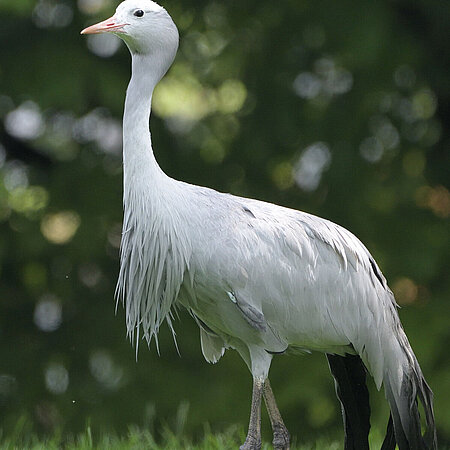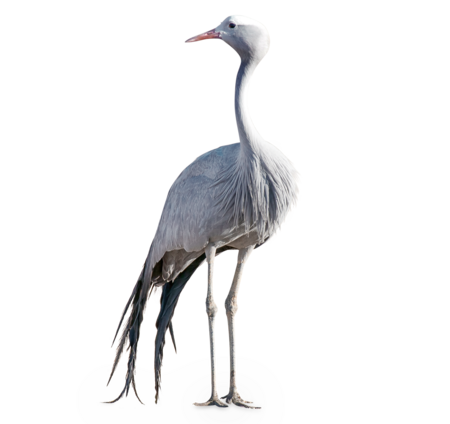Blue crane
Anthropoides paradisea

- Family
- Cranes (Gruidae)
- Weight
- up to 5 kg
- Habitat
- Steppes near rivers or lakes, cultivated land
Remarkable fighting style
They may not look like it at first glance, but blue cranes are extremely skillful fighters. When fighting, they spread their wings wide, leap into the air and kick the opponent – raking the offending animal with their sharp claws. The blue crane usually aims for the eye to maximise injury, which keeps large predators at bay.

Habitat under threat
Like the majority of crane species, the blue crane population is facing several threats. These include the destruction of wetlands, their natural habitat, and the extensive use of pesticides in agriculture. Poaching also presents a problem as egg collectors cause a decline in the number of offspring. Global conservation projects have implemented measures to preserve this beautiful species.
The blue crane is one of the loudest of all birds. Its guttural, bugle-like call can be heard up to 2 km away due to its unique long windpipe.
Distribution


Hellabrunn participates in the European Studbook